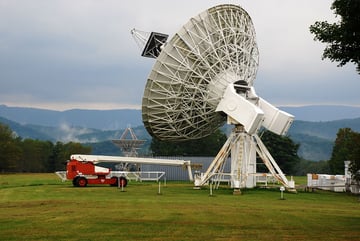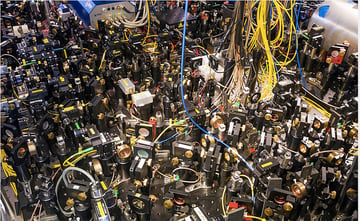- Products
- All Products
- RF PA Extension Kit
- Wireless Microphone Upgrade Packs
- In-Ear Monitor Upgrade Packs
- Wireless Microphone Antennas
- Wireless In-Ear Monitor Antennas
- Antenna Distribution for Microphones
- Antenna Combiners for In-Ear Monitors
- Multi-Zone Antenna Combiners
- Spectrum Tools
- Accessories, Cables and Parts
- Solutions by Venue
- Resources & Training
- Performance Tools
- About Us
December 14, 2014
FCC Issues Citation to 41 Story L.A. Skyscraper for Installing Bad Light Fixtures
Written by: Alex Milne
Today the FCC issued a citation for the illegal operation of unlicensed RF devices to the owner of the 41 story Ernst & Young Plaza in Los Angles. The devices in question? GE brand flourescent light fixtures.
The citation reveals the fixtures are emitting spurious RF energy in the 700 MHz band, enough that a nearby 700 MHz Verizon LTE cell site was harmfully affected. Verizon complained first to the property manager, and then filed with the FCC.
"Brookfield is being cited for operating industrial, scientific, and medical (ISM) equipment and causing harmful interference in violation of Sections 18.111(b) and 18.115(a) of the Commission’s rules," the citation states.
"On April 30, 2013, agents from the Enforcement Bureau’s Los Angeles Office visited the Building... The agents provided the Property Manager with a copy of the GE Lighting, Product Bulletin. The GE Bulletin states that GE UltraMax ballasts were 'tested in accordance with applicable FCC Part 18 requirements,' and that a small number 'produced unintentionally high-frequency radio emissions that have the potential to cause interference with certain types of wireless communications.'"
It is unclear whether the fixtures are malfunctioning, whether the cumulative effect of 41 stories of such fixtures are amplifying small RF leaks in the fixtures, or if the cell site is just in an unlucky spot. As the end user of an unlicensed device, FCC regulations shift the burden of responsibility squarely on to their shoulders--away from the regulator, the paying incumbant, and even the manufactuer that actually designed the device.
There was no fine charged in conjunction with the infraction, and all the owner needs to do is remove the source of interference. But that may be easier said than done. It will be interesting to see how the FCC manages fines and actions against wireless microphone users in non-permitted spectrum bands going forward. It seems once a larger telco like Verizon is involved, actions are taken, whereas more localized turf wars between A/V facilities may not be formally addressed.
Tag(s):
Alex Milne
Alex Milne was Product Marketing Manager and Digital Marketing Manager for RF Venue, and a writer for the RF Venue Blog, from 2014-2017. He is founder and CEO of Terraband, Inc., a networking and ICT infrastructure company based in Brooklyn, NY., and blogs on spectrum management, and other topics where technology,...
More from the blog

Knowledge Guides
Take a Bite out of Interference with "Shark Fin" LPDA Antennas
3 min read
| December 14, 2014
Read More

Diversity Fin Antenna
RF Noise Growing Louder Inside Nation's Only Radio Free Zone
2 min read
| December 13, 2014
Read More

Knowledge Guides
Incentive Auctions Fail to Meet Final Stage Rule, Reset to be Scheduled at Lower 114 MHz Target
4 min read
| August 31, 2016
Read More
Subscribe to email updates
Stay up-to-date on what's happening at this blog and get additional content about the benefits of subscribing.

